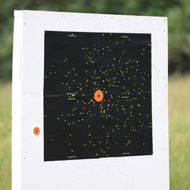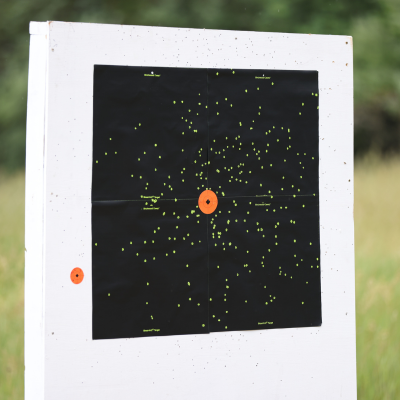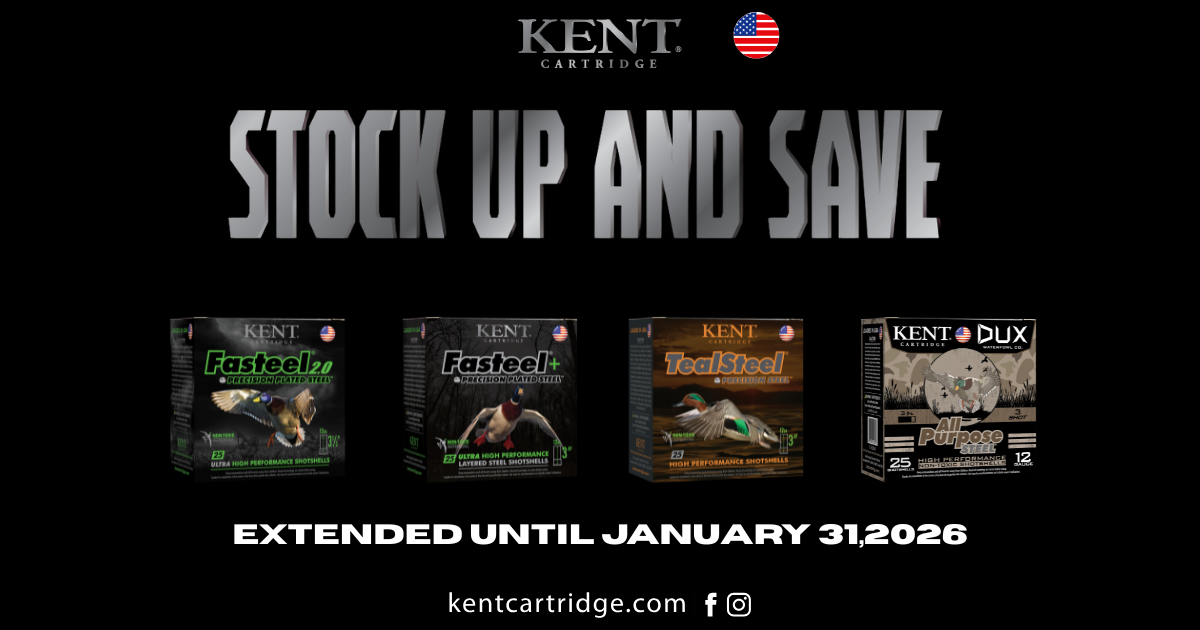Why pellet count matters
Posted by Kent Cartridge Staff on Oct 29th 2025
Why Pellet Count Matters.
When it comes to waterfowl hunting, few factors influence your success more than pellet count. It’s one of the most overlooked elements in shotshell selection, yet it directly affects pattern density, pellet energy, and overall effectiveness in the field. With modern non-toxic loads like Kent Cartridge’s Fasteel® 2.0, understanding how pellet count works will help you make more ethical shots and bring more ducks and geese to hand.
What Pellet Count Means
Pellet count is the total number of pellets in a shotshell. This number varies based on shot size and payload weight. Because steel shot is less dense than lead, steel pellets are lighter and larger for the same diameter. That means a 1¼-ounce load of steel will contain more pellets than the same weight of lead. This higher pellet count is essential for maintaining pattern density — the number of pellets that strike a target within a given area.
Pattern density is critical because waterfowl are tough birds with dense feathers, strong muscles, and vital areas that are not easy to hit. A tight, even pattern increases your chances of delivering multiple pellets to the vitals, resulting in clean, ethical kills. Too few pellets, and your pattern might have gaps that allow birds to slip through unscathed.
Pellet Count Examples
Here’s a rough guide to approximate pellet counts per ounce for common steel shot sizes:
- #4 steel: 191 pellets per ounce
- #3 steel: 153 pellets per ounce
- #2 steel: 124 pellets per ounce
- BB steel: 90 pellets per ounce
These numbers help explain why pellet count is a balancing act. Smaller shot sizes (#4 or #3) offer more pellets and denser patterns, which is ideal for smaller birds like teal or wood ducks. Larger pellets (#2 or BB) carry more energy per pellet and penetrate deeper, which is critical for bigger birds like late-season mallards or Canada geese. However, they also reduce the total pellet count, which means fewer opportunities to hit your target.
Pattern Density in the Field
Consider how pellet count plays out in real hunting situations. A 1¼-ounce load of #6 steel will launch 394 pellets, creating a dense cloud ideal for fast-flying teal at 25 yards. That same payload with #2 steel drops to about 156 pellets — fewer chances to connect, but each pellet hits harder and penetrates deeper, making it a better choice for large ducks or geese at 40 yards.
The key is matching your load to your typical hunting conditions. If most of your shots are close and fast, a smaller shot size with a higher pellet count will help you fill the pattern and increase hit probability. If you’re hunting larger birds at longer ranges, larger pellets may reduce pellet count but improve penetration, increasing your chances of a clean harvest.
Pellet Count and Patterning
Pellet count is also a crucial part of patterning your shotgun. Every shotgun and choke combination is different, and small changes in pellet size or payload weight can dramatically affect pattern performance. Shooting at paper targets at realistic hunting distances will show you how many pellets are hitting the vital 30-inch circle and whether the pattern is evenly distributed.
Premium steel loads like Kent’s Fasteel 2.0 are designed to deliver consistent pellet counts and tight, uniform patterns across a wide range of chokes and shotguns. By patterning your setup, you’ll gain confidence in how your load performs in the field and make more informed decisions about shot size and pellet count.
Final Thoughts
Pellet count might not get as much attention as velocity or payload weight, but it’s one of the most important factors in waterfowl ammunition performance. It directly affects pattern density, pellet energy, and overall effectiveness in the field. Understanding how pellet count changes with shot size and load choice — and how those choices match your hunting scenarios — will help you make smarter decisions this season.
Whether you’re targeting early-season teal or late-season honkers, choosing the right combination of pellet count and shot size is key. With high-performance steel loads like Kent Cartridge’s Fasteel 2.0, you can trust that every shell delivers consistent pellet counts and patterns built to bring more birds down cleanly.
Read Our Other Blog Posts
Back To Blog-
Kent Cartridge Holiday Gift Guide
Kent Cartridge Holiday Gift Guide 2025 Top Gifts for Waterfowl Hunters, Upland Hunters & Outdoor Ent … -
Why pellet count matters
Why Pellet Count Matters. When it comes to waterfowl hunting, few factors influence your success mor … -
Kent Cartridge Extends Steel Waterfowl Rebates Through the 2025–2026 Season
Kent Cartridge, a leader in high-performance shotshell ammunition, is excited to announce the exten …













